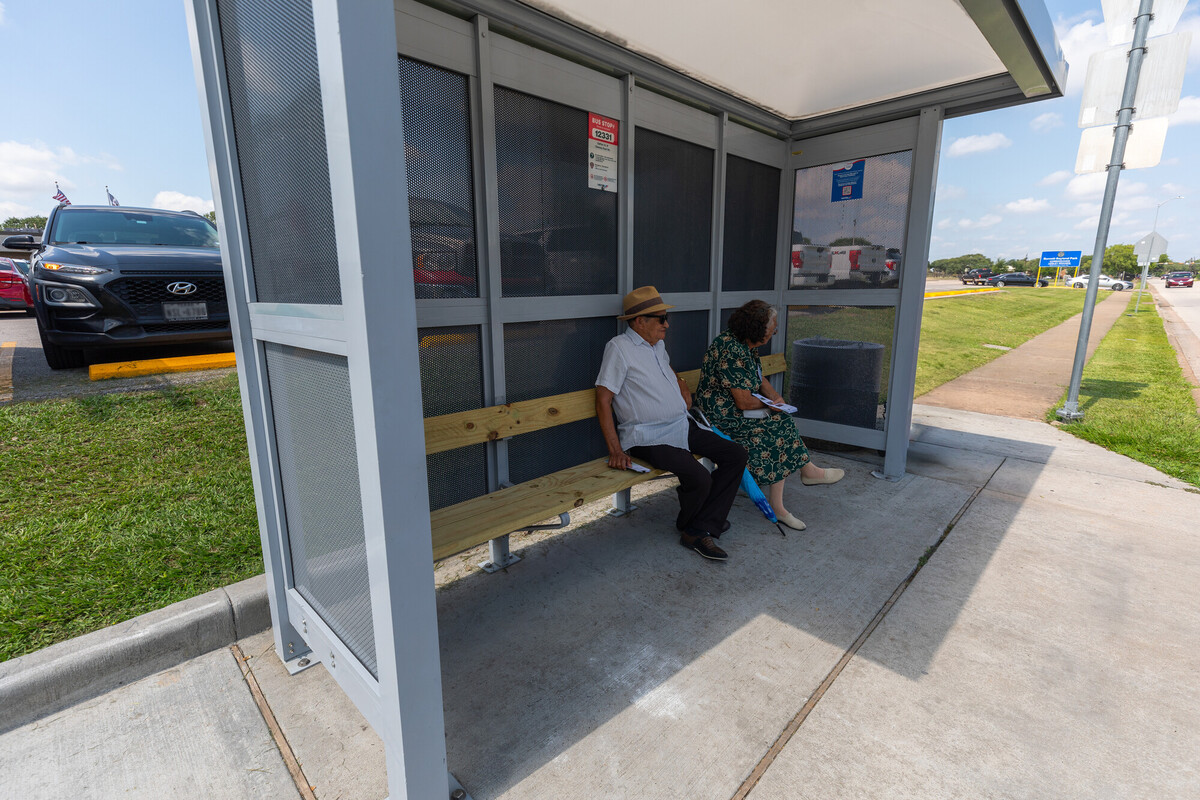provided/Houston METRO
A new bus shelter design by METRO replaces the translucent polycarbonate panels of the existing shelters with perforated panels to allow for more airflow.
METRO has begun rolling out new bus shelters in select areas of Houston as part of its pilot program to lower temperatures and better protect riders from the heat.
The initiative follows a 2023 investigative report and podcast by Houston Public Media, called “Hot Stops,” which examined dangerously high temperatures inside METRO’s bus shelters during the summer months and explored how trees and different shelter designs impact heat stress. The research and data included in the report were published in a peer-reviewed academic journal this March.
“We were aware of various studies that have been conducted regarding heat inside the shelters,” said Kenneth Brown, METRO’s director of service enhancements. “So, we wanted to address this quickly. Our chair really issued the call to come up with a concept that could provide some relief sooner rather than later.”
Six shelters in the Gulfton neighborhood had been renovated as of Friday. The new design replaces the translucent polycarbonate panels of the existing shelters with perforated panels to allow for more airflow. According to METRO, the pilot project will take place over six months, with several more shelters scheduled to be renovated.
Brown said temperature-monitoring equipment has been installed at the pilot shelters to help determine how effective they are.
“They’re measuring heat inside the shelter,” he said. “So, if you were to visit one of the shelters … they have temperature gauges on the inside of the shelter and on the outside.”
With the gauges having been in place for a little more than a week, Brown said the region’s public transit provider does not yet have enough data to conclusively say whether or not the new shelters provide better protection.
“I know that our chief safety officer was out there, he sat in the shelter, he looked at the gauge (and) he only noticed a one-degree difference between the perforated shelter and the regular shelter,” he said. “But, it still needs to be examined a bit further. That was probably only after it had been in place for a couple of days.”
The Gulfton neighborhood was chosen as the testing area due to it being one of the hottest areas in the city. Brown said METRO is also exploring some other new shelter designs, but those would likely take longer to develop and roll out.
“They’re also looking at a completely, totally different design, but that’s being explored by another group in our urban design division,” he said. “So, they’re looking at something more long-range, and we’re also getting support from other agencies, like (Harris County) Precinct 4 is looking at a concept for a shelter that (would) focus more on shade than the actual enclosure.”
